Discover Buddhist Geeks
Buddhist Geeks

 Buddhist Geeks
Buddhist Geeks
Author: Vince Fakhoury Horn
Subscribed: 7,918Played: 62,641Subscribe
Share
© Vince Fakhoury Horn
Description
471 Episodes
Reverse
Leigh Brasington explains how the mind progresses through the four jhānas—from initial access concentration and the energetic, pleasure-filled first jhāna to the progressively quieter states of happiness, contentment, and equanimity—emphasizing their practical characteristics, traditional similes, and their role in supporting insight practice.💎 The Jhāna CommunityThis recording took place in The Jhāna Community. If you’re interested in accelerating your meditation practice, and want to explore many dimensions of jhāna, consider checking out our community of practice:💬 Transcript🤖 AI Transparency: The transcript below was lightly edited with ChatGPT to correct for spelling & grammar errors. Also – we like em-dashes – so we kept them. 🤪Leigh Brasington: So last week I talked about how to get to the first jhāna. You’ve got to get yourself settled. You’ve got to generate access concentration, which may take a while.There’ll be distractions. Label the distraction, relax, and come back. My favorite label is “story.” I am distracted, and I see I’m telling myself a story, and I just go “story,” and it goes away. Sometimes I’m telling myself a story about something I want to get, sometimes about something that shouldn’t be happening.Sometimes I’m telling myself a story because I’m bored with my breath and I just want better entertainment — and I’m a good storyteller. So: story, and it’s gone. But eventually the mind settles in, I’m not getting distracted, and I’m knowing each in-breath and out-breath. If I’m doing mindfulness of breathing and I stay there for a while, this is access concentration. And then I shift my attention to a pleasant sensation and do nothing else.This focus on the pleasant sensation has the effect of generating a feedback loop of pleasure, which eventually turns into the first jhāna. I’ll read you what the Buddha has to say about the first jhāna. This is from the second discourse in the Long Discourses — the Samaññaphala Sutta, the Discourse on the Fruits of the Spiritual Life: “Quite secluded from sense pleasures, secluded from unwholesome states…” Okay, that’s the abandoning of the hindrances, the getting past the distractions. Basically, you’ve got to abandon the hindrances temporarily.So this is the seclusion. It says one “enters and remains in the first jhāna, which is accompanied by thinking and examining, and is filled with rapture and happiness born of seclusion.” One enters and dwells in the first jhāna. So there’s the actual entering of the jhāna, and then there’s stabilizing it so that it lasts for a while.It says “thinking and examining.” The Pali words are vitakka and vicāra. Vitakka means thinking, and vicāra means examining or pondering. Unfortunately, in later Buddhism those words — but only in the context of the jhānas — got changed to “initial attention” and “sustained attention” on the meditation object. The Buddha would be shocked. I’ve done research on all the places in the suttas where vitakka shows up. There are 979 locations, all right? So it’s an important word, and it means “thinking,” always.I looked through to see if I could find any place where Sujato — I’m just looking at his translations — has “placing the mind” instead of “thinking,” and doesn’t have “keeping connected,” which is his translation of vicāra, and it’s not related to the first jhāna or the second jhāna. And I found all of them: none. Zero.Okay. Although you may hear that it’s initial and sustained attention to the meditation object — and you do have to do that, no doubt about it — but that’s not what these words mean. I suspect the reason for the change is that, as time went on, the understanding of the level of concentration needed to call something a jhāna kept increasing. And then they couldn’t have thinking. With this level of concentration, you couldn’t have any thinking and examining. You had to come up with something else to explain what was there. So they just took something that you did have, changed the meaning of the words — only in the jhāna instance — and stuck that in there. Not helpful.When you’re in the first jhāna, your mind is not really deeply concentrated. It’s like, “Oh wow, this is intense.” Because the next thing it says is that the state is “filled with rapture and happiness born of seclusion.” Rapture is pīti, and happiness is sukkha. And suddenly you’ve got all this excess energy — the pīti — and it’s like, wow. “Oh, this is intense. What’s going on here? Is this… this has got to be the first jhāna. I’m sure it’s the first jhāna. This couldn’t be…” Whatever. You’re commenting on it and you’re thinking about it.Now, it’s true it’s a little bit unstable, and so you do have to keep putting your attention back on it and not get lost in it. But basically what’s happened is that you’ve arrived in a state where the pīti comes up and predominates, and you have all this physical energy, and there’s some background happiness, and you’re commenting on the experience. That’s the first jhāna.It says one drenches, steeps, saturates, and suffuses one’s body with this rapture and happiness born of seclusion, so that there is no part of one’s entire body not suffused by rapture and happiness. Okay, this is an advanced practice. The first thing to do is get to the first jhāna once. Then get there the second time, which might be a little more difficult because you know it’s there and you want it. Okay? So don’t let the wanting get in the way. And then get in on a regular basis.When you first get in, it may be sort of the upper torso, neck, head — maybe the whole spine, probably not the whole body. Now, some people, when they get to the first jhāna the first time, yeah, it’s a whole-body experience. But for the majority of people, it’s upper body — particularly upper torso, neck, head, and maybe the spine.If you’re good at the first jhāna, then it’s possible to put your attention where it feels strongest — probably in the head area — and then move your attention to someplace where you don’t seem to have any pīti or sukha, like the arm. You’re not trying to move pīti: you’re just moving your attention, but the pīti will follow. And then you do the other arm, the lower torso, one leg, the other leg, and you’ve gotten the drenched, steeped, saturated, suffused. But I’m going to say this again one more time, redundantly: it’s an advanced practice. Get good at getting in and stabilizing what’s there.We have a simile: “Suppose a skilled bath attendant or his apprentice were to pour soap flakes into a metal basin, sprinkle them with water, and knead them into a ball so that the ball of soap flakes would be pervaded by moisture, encompassed by moisture, suffused with moisture inside and out, and yet would not trickle. In the same way, one drenches, steeps, saturates, and suffuses one’s body with rapture and happiness born of seclusion, so that there is no part of one’s body not suffused by rapture and happiness.”So this gives us an idea of what soap was like at the time of the Buddha. You didn’t go to the store and buy a bar of soap. You got your skilled bath attendant to take a metal basin and pour in the right amount of soap flakes, then the right amount of water, and then mix it together until you had a homogeneous ball of soap. The mixing is kind of frenetic. The energy of the first jhāna is very frenetic. Okay? So that’s really what’s going on. You’re dealing with all this energy, and then, when you’re really good at it, the water totally permeates the soap flakes, and your pīti and sukha totally permeate your body.Notice the body is mentioned here. It’s totally permeated with pīti and sukha. There is still bodily awareness, unlike in the Visuddhimagga, the later commentary. No bodily awareness there — you’re just checked out. But here in the suttas, there’s very definitely bodily awareness.Yeah, you get concentrated enough, you put your attention on a pleasant sensation, the first jhāna arises. The intensity level can vary quite a bit — not per person, but over a group of people. Some people will get it so intense it’s like sticking a finger in an electrical socket, blowing the top of your head off. Other people just get, “Oh yeah, this is kind of nice.” The pīti can show up as movement or as heat or as both. Usually it comes as one or the other — doesn’t matter. And the sukha is the emotional sense of joy or happiness, depending on how you interpret it, but it’s a positive mental state.If it’s mild, you could stay in the state for five to ten minutes. I’d say beyond ten minutes is not useful. If it’s intense, you wouldn’t stay as long. If it’s pretty intense, maybe you stay a couple minutes. If it’s very intense, maybe only 30 seconds. If it’s just way too much, maybe only ten seconds. And then the thing to do is to move on to the second jhāna.The trick for moving on — when you’re ready — is to take a deep breath and really let the energy out. Last week I said that when you’re getting to access concentration and your breath gets shallow, don’t take a deep breath because it takes you away from the jhāna. Yeah. Now that you want to go away from the first jhāna, take a deep breath, and on the exhale just really let the energy out. That will calm the pīti.This enables you to do a foreground–background shift. If this is the pīti and this is the sukha, then you take the deep breath and all of it calms down, but now the sukha is more prominent than the pīti. Pīti is still in the background. Focus on the sukha. That’s how you move from the first jhāna to the second.I’ll read you what the Buddha has to say:“Further, with the subsiding of thinking and examining, one enters and dwells in the second jhāna, which is accompanied by inner tranquility and unification of mind, is without thinking and examining, and is filled with rapture and happiness born of concentration. One drenches, steeps, saturates, and suffuses one’s body with a rapture and happiness born of concentration, so there is no part of one’s bo
🤖 AI Transparency: The transcript below was lightly edited, for both spelling & grammar errors, using ChatGPT. In this talk jhāna teacher Leigh Brasington draws on teachings from his teacher Ayya Khema, offering a clear, practice-based guide to entering the first jhāna, a meditative state of joyful concentration described in early Buddhist texts.A Jhāna RetreatIf this sounds like your jam, consider joining Vince Fakhoury Horn & Brian Newman for The Flavors of Jhāna retreat, this coming January in Portugal.💬 TranscriptLeigh Brasington: Very nice to be here, I appreciate the invitation. I always like talking about the jhānas—very interesting topic. So what I’m going to do today is share the basic instructions for how to enter the jhānas as I teach them. I learned them from Ayya Khema. Actually, I stumbled into the first one when I was on retreat with Ajahn Buddhadasa in Southern Thailand. I didn’t know it was a jhāna. They told me I was experiencing pīti. I knew I liked it. It changed my practice from something I knew I should do to something I wanted to do. Just the pleasure of it—yeah, I’m a greed type—okay, here’s a nice source of pleasure.The jhānas are eight altered states of consciousness. Actually, in the suttas there are four jhānas and four immaterial states, and it’s not until much later that they’re referred to as the eight jhānas. That’s convenient if you want to talk about the four immaterial states and the four jhānas at the same time, but they’re definitely different in the suttas. We do find many suttas where there are the first four jhānas and then three or four of the immaterial states, so it’s a pattern that makes a lot of sense.Most of the Buddhist teachings are in three categories: sīla, samādhi, paññā—ethics, concentration, wisdom. Sīla is morality, keeping the precepts. Samādhi is usually translated as concentration, but I actually prefer “indistractibility.” Concentration’s got that furrowed-brow thing—people try too hard and it doesn’t work. That’s one problem with teaching jhānas.I give students two warnings at the beginning of a retreat. First: if you have expectations, you’re in trouble. Expectation is wanting—the first hindrance. Over and over again the Buddha talks about the abandoning of the hindrances as a prerequisite for entering the jhānas. The other warning is that if you start fooling with concentration and you have any unresolved issues, they might come up. Hopefully none of you have unresolved psychological issues—but yeah, seems to be a problem for humans.Then paññā is wisdom. Basically what the Buddha is saying is: clean up your act, learn to concentrate your mind, and use your concentrated, indistractible mind to investigate reality and understand what’s actually happening.The jhānas in the suttas are frequently preceded by the abandoning of the hindrances. You might notice when you’re meditating and get distracted, you could label most distractions with one of the five hindrances: wanting, not wanting, sluggishness, restlessness, remorse, or doubt. What’s really necessary to enter the jhānas is a mind that’s relatively quiet.In later Pali literature it talks about “access concentration.” I’ve adopted that phrase to describe what you have to generate before entering the jhānas—not the deep concentration described in the Visuddhimagga, but good enough to have a chance at the jhāna as described in the suttas.So, basic instructions. Sit in a comfortable, upright posture—comfortable enough that it doesn’t generate aversion, but not so comfortable you fall asleep. Once you’re settled, put your attention on your meditation object. The Visuddhimagga mentions about thirty possible objects for developing access concentration. Most people work with mindfulness of breathing—the most common. Others use mettā meditation, or any of the brahmavihāras. A body scan works too—just slowly noticing sensations through the surface of the body without trying to change anything.Some teachers, like Ajahn Sumedho, teach using the nāda sound—the subtle ringing you can hear when it’s quiet. That can work too, though I don’t recommend it unless you want to hear that sound forever. A fifth option is a mantra. If you do a mantra until the mantra starts “doing you,” that’s a sign of good concentration.If you’re using the breath, you might notice some signs as you get concentrated. A diffuse white light may appear. That’s called a nimitta—just a sign that concentration is strong. Don’t do anything with it; it’s like a road sign telling you where you are. Later Buddhist texts describe a bright circular light, but the suttas don’t mention that. Still, if you see it, good—you’re concentrated.As concentration deepens, the breath may become shallow or even seem to disappear. Don’t worry—you’re not going to die. Your body knows how to breathe. What’s happening is that your body doesn’t need as much oxygen because you’re still and calm. If you notice the breath slowing down, resist the temptation to take a deep breath. That resets the chemistry that helps bring on the first jhāna.So: you sit, settle, put attention on your object. When you get distracted, label the distraction, relax, and come back. Labeling helps disidentify from it and shows where the mind tends to wander—wanting, aversion, past, future. Notice how seldom the distraction is in the present.Relaxation is key because most distractions create tension. Just relax and return to the breath—or whatever object you’re using—letting it flow naturally. Access concentration is being fully with the object, with only wispy background thoughts like, “Is this what he meant?” instead of full-blown planning.Once you realize you’re in access concentration, stay there for five to fifteen minutes. Time will feel distorted, so just hang out. If you’ve been there long enough—or your breath is so subtle it’s not usable as an object—there’s a trick: drop attention on the original object and shift to a pleasant sensation.If you look at statues of the Buddha, he’s always smiling—that’s a teaching. Try smiling slightly and notice the pleasantness of it. Focus on that pleasantness. For some people it’s the hands—a warm, tingling glow. For mettā, the heart center. It could be anywhere: third eye, top of the head, shoulders, feet—whatever’s pleasant.Once you’ve found a pleasant sensation, here comes the hard part: do nothing. Just enjoy it. Anything you do will mess it up. Remain focused on the pleasantness itself. If you stay steady, the pleasantness will intensify gradually, building until it erupts into pīti-sukha—physical rapture and emotional joy.The instructions, in short: sit, settle, focus on your object; label distractions, relax, return; stay non-distracted; find a pleasant sensation; focus on it; do nothing else. The jhāna will find you. You don’t do jhāna—you set up the conditions for it to arise.The most common problem is jumping too soon—grabbing at pleasant sensations before concentration is stable. Wait until you’re really steady. Another problem is trying to make something happen or getting excited when it does—both break concentration. You can’t enter jhāna and stay in control. You have to let go into the experience.Ayya Khema said, “Letting go is the whole of the spiritual path.” That applies here. The first time the jhāna comes, it might feel mild or like it’s blowing the top of your head off—either is fine.The length of time to stay in the first jhāna is inversely proportional to the intensity. If it’s strong, 20–30 seconds is plenty; if mild, up to 10 minutes. When you’ve had enough, take a deep breath to release the energy, then focus on the sukha—the emotional pleasure. The first jhāna is pīti with background sukha; the second is sukha with background pīti.The purpose of the first jhāna is to get you to the second. If you’re concentrated enough, you can enter any jhāna directly, though that usually takes years of practice.You could think of the mind like a still pond. Normally it’s wavy; concentration calms it. Then you drop in a pebble of pleasure, and the ripples bounce and reinforce until they rise as a geyser—that’s the first jhāna.I suspect pīti involves dopamine breaking down into norepinephrine, and sukha involves opioids like serotonin. I’m a retired computer programmer, not a neuroscientist, but Jud Brewer thought that made sense. Focusing on the pleasant sensation is rewarding—it releases dopamine, which stimulates the nucleus accumbens, generating opioids. The norepinephrine explains the heat or vibration some people feel.So essentially, you’re setting up a feedback loop of pleasure. Everything we experience is neurotransmitters; this is just a skillful way of using them to shift consciousness. The first jhāna alone won’t give deep enough concentration for strong insight—that develops more in the higher jhānas, especially the third and fourth.So, by the time you get to the third and fourth jhānas, your concentration is deeply enhanced. The first jhāna is mostly about learning how to make the mind happy. It’s a wholesome form of pleasure, because the hindrances have been set aside. It’s blameless pleasure. The Buddha said it’s a pleasant abiding here and now. It’s not sensual pleasure—it’s mental pleasure.You can’t be lustful or hateful and be in the jhānas at the same time. The hindrances have to be abandoned first. So, the first jhāna is a good antidote for desire, aversion, restlessness, doubt—all of that.If you look in the suttas, you’ll see that the Buddha talks about entering and abiding in the first jhāna, then emerging and reflecting on it. He often says, “He enters and abides in the first jhāna, then emerges mindful and clearly comprehending.” The reflection part is where insight comes in.You can look back and notice what was present and what was absent. “Okay, in that state, there was one-pointedness, there was rapture, there was happiness. There wasn’t anger, there wasn’t craving, there wasn’t restlessness.” You begin to see the
Vince Fakhoury Horn reflects on his experiences within the Insight meditation tradition, as an authorized teacher in the lineage, arguing that its senior leaders have remained complicit, through their silence, on the genocide of Palestinians in Gaza.💬 TranscriptVince: Today I want to speak to you as an authorized representative of the Insight meditation tradition. I was authorized to teach—empowered to teach—by Trudy Goodman and Jack Kornfield in a public ceremony in Los Angeles several years ago.This is largely going to be a story about my experience with the Insight meditation tradition and a kind of out-loud contemplation and meditation on how this tradition, from my point of view, has ended up two-plus years into what I saw, and see still, as a genocide in Israel with the Gazans—the Palestinians in Gaza—and how the Insight tradition has remained silent, largely silent, on such an important issue, one of the moral issues of our time, I think.And of course, I have to acknowledge as a Palestinian American, my view is informed by my own history. But I also want to say most Americans have no clue what the history is here. And I run into this every single day as I talk to people, as I try to share my honest experience—not hide—to be courageous and open about what it’s like to be a Palestinian living in America today, watching people that I care about be murdered, watching my family in the West Bank be terrified as they live in conditions which I could only describe as concentration-camp-like conditions.Two of my close family members here in Western North Carolina—two members who married into the larger clan of Fakhourys that live here. The last name of my grandfather was Fakhoury—Latif Fakhoury. He raised me; he was my father basically; I called him Pops. A number of family members live here in this area who immigrated here so they could get support from each other.Two of them have shared that they’ve both lost over 200 family members in Gaza. I want that to land with you for a second.Two hundred. That’s a whole family tree. People are losing family trees.So to me, as a Buddhist practitioner and as a Palestinian American—as someone who cares about things like this—I’m just completely, utterly fucking heartbroken, and I have been for the last two years. And I feel like during that time I’ve waited, I’ve waited, I’ve waited for the leaders of my own lineage—for my own teachers—to take a courageous moral stand. And the reality is they have not. And I don’t think they will.And so how in the world did we get here? I’ve been thinking about this a lot, and I’ve been looking at my own disappointment and disillusionment around it. And I’ve been disillusioned and disappointed before by teachers—you know, I’m not new to this game. I’ve been a teacher for 15 years. I’ve seen people get disillusioned and disappointed with me. That’s, in part, normal.But this is not. I want to claim that this is not normal. This is an abdication of moral responsibility at the deepest level.And I guess it’s not that surprising to me as I reflect back on my own experience with this tradition. When I first started engaging in the Insight tradition, around 2003, I went up for my first retreat at the Insight Meditation Society in Barre, Massachusetts. It was with Joseph Goldstein and a number of other teachers, who themselves had just exited a six-week retreat with Sayadaw U Pandita, a famous Burmese meditation master who was christening the new Forest Refuge long-term retreat facility with a retreat for the teachers of the Insight tradition.And for me, this was like falling in love. It was exactly what I was looking for—the hardcore retreat experience. I had been reading Daniel Ingram’s work prior to this—my first teacher—and he advocated for this hardcore contemplative approach. So it was great. I fell in love. I loved the Buddhist tradition. I loved the teachings. I loved the opportunity to go deep and be hardcore in my practice.But I noticed even then—me, a millennial practicing in an almost completely Boomer culture—that the politics of the place were weird. I remember complaining about this many times to my partner and other friends: how we would go on these retreats and the teachers would act apolitical, but then they would proceed to share reams of political opinions in their Dharma talks—some of which I agreed with and many of which I did not.And I found their political views to be quite homogeneous and quite apparent, and yet somehow being couched in apolitical terms. That was the first thing I found odd.So now when I look at it, this is a modernist movement. This is a modern movement. And part of what one does in the modern world, especially in the marketplace, is you depoliticize things. It’s not smart business to bring politics into your product or your offering.Right—but this isn’t exactly a product, and this is, I think, one of the challenges of bringing Buddhism into the modern world, especially into America, the hyper-capitalist capital of the world. How do you not lose the spirit and essence of the Dharma when adapting to a new environment? How do you not leave something transformative and powerful on the table by not being willing to adapt to the new environment?I want to hold this tension here between conserve and adapt throughout this monologue if I can, because I think it’s a really important generative tension.But in my experience with the Insight tradition, when I first started engaging with it in the early aughts, they were caught in a kind of paradox around their own obvious political views—which were liberal, maybe progressive-leaning, leftish. Very Boomer-centric in terms of a particular kind of generational politics.And I found it very awkward and weird practicing in those environments. But it was okay. I could deal with it. I could handle it. Some ten years later, as the times changed and as the traditions changed, I noticed that increasingly the Insight tradition—starting with Spirit Rock, the more liberal of the two major centers in California, and then following that, the Insight Meditation Society—began making the politics more explicit. They started to own the values of inclusion and wanting to make this available not just to young people (which was kind of their initial politics of attracting the next generation), but also to people of color and the LGBTQI community and all of these different historically marginalized groups they wanted to explicitly include and make space for.They began to examine some of the cultural conditions they have around the practice, to see the impact and influence of American WASP culture—White Anglo-Saxon Protestant culture. And they started to realize, “Oh, even though we went to Asia and did all this stuff, of course we still have this conditioning. And it’s fine for us, and it’s fine for anyone like us, but it’s potentially problematic for other people.”An example of this: many people who are non-white come to meditation retreat centers and then are told to be silent. They hear that from a different point of view. They don’t hear it from the perspective of members of the dominant culture, who can just be quiet and be okay. Rather, they’re coming from a point of view of having felt like they were silenced—often systematically silenced—and then they’re entering into an environment where they’re told to be quiet again.This is an example where the Insight tradition, I think—and I want to praise the Insight tradition here—has done a good job of wrestling with these very challenging questions of how to teach Dharma in a multicultural, postmodern world. And this is a transition, I think, from modern to postmodern: when you start to actually include voices that have been historically marginalized; when you start to become aware of those power differentials and the history there; that is a kind of awakening to a new level of understanding.In the developmental psychology world, they would call that Pluralism or Postmodernity. And I think it’s really important, because you can take a view on the modern meta-narrative, on the grand story of what modernity is. It’s about progress and it’s for all people, etc., etc. It’s like, “Oh yeah, that’s beautiful, but in reality, how does it actually work? Where did all this wealth come from that we’ve accrued as modern people? Who’s left out?”These are the questions I think you have to start asking if you want to move past the modern mode.And my teachers did that, and I learned a lot from them in the process. Not just from them— from others as well— but I went through that journey with them as I was training very seriously. I watched their initiatives at their own retreat centers, and that informed how I taught. That informed my views. And I began to believe that, in fact, they were integrating this pluralistic wave of development—this inclusive mindset that can include people regardless of their backgrounds and regardless of their histories: include them financially, include them culturally, etc.Now, of course, in practice this has been a painful implementation. I’ve seen behind the scenes of that quite a bit, having been married to someone who has worked both inside the Insight tradition as a teacher—teaching at places like Spirit Rock—and who also trained for eight years as a mindfulness meditation mentor in Jack Kornfield and Tara Brach’s Mindfulness Meditation Teacher Certification Program. We just called it at home the “MMTCP,” because you couldn’t repeat that many times.So I very much got to see, from their point of view and my own, that the tradition has done a lot in its attempt to include these areas and topics which have historically been excluded.I want to zoom into a particular time period now, which was the murder of George Floyd during COVID. I was leading, along with my wife and several colleagues, an online retreat just after George was murdered.During that retreat, all of the people teaching presented as white and looked white. I prob
In this Buddhist Geeks episode, Vince Fakhoury Horn and Robert Wright explore the intersection of Buddhism, ethics, and geopolitics as they reflect on Palestine, Jewish-Buddhist responses, moral responsibility, and the role of mindfulness amid global violence. Get full access to Buddhist Geeks at www.buddhistgeeks.org/subscribe
Vince Fakhoury Horn: The Flavors of Jhāna—I can’t remember where I first heard this term. I think it was from you or from Kenneth [Folk].Brian Newman: Maybe we should start there. You came to me and said, “What should we call the retreat?” And I said, “Hey, you’re the one who wanted to do it in Portugal—what should we call it?” You threw it back at me, and I said, “Can we call it the name of my half-written book?”So folks, this all comes from a story that’s part of a lineage. This is a Kenneth Folk story, and it’s his way of demonstrating Jhāna on the spectrum.Kenneth says: imagine you’ve got a bunch of strawberries. You crush them into a strawberry smoothie, and you drink it. What does it taste like? A hundred percent strawberries.Now imagine a glass of clear water. You take a strong strawberry extract in concentrated form, drop in a single drop. What does it taste like? Strawberry—but just one tiny drop.And Kenneth’s punchline is, “It all tastes like strawberry, motherfucker.” His point is that it doesn’t matter where you are on the spectrum of Jhāna. On one end, you’ve got the Pa’auk tradition—completely absorbed, so much so that a gun could go off next to your head and you wouldn’t notice. On the lighter end, you’ve got Leigh Brasington, teaching Jhānic factors in a very Sutta-based way, or even lighter approaches. But Kenneth’s point is: it all tastes like Jhāna. Different flavor, same essence.Even the tiniest drop in the ocean still tastes like strawberry. That’s how I understood the story when Kenneth told it.Much of this dialogue centers around an upcoming 10-day meditation retreat on the same topic, The Flavors of Jhāna, that will be co-taught by Brian Newman & Vince Horn.Vince: The Flavors of Jhāna—I can’t remember where I first heard this term. I think it was from you, or from Kenneth [Folk].Brian: Maybe we should start with that, yeah. So, Vince, you came to me and you said—no, I said to you, “What should we call the retreat?” And you were like, “Hey man, you’re the one that wanted to do it in Portugal, what should we call it?” And you put it back to me. And I said, “Can we call it the name of the book—my half-written book?”And so this is, folks, this is all coming from a story that’s part of a lineage. And I promised we’d tell some of those today. So this is a Kenneth Folk story, and it’s his way of demonstrating Jhāna on the spectrum.So Kenneth says this: imagine that you had—glass—imagine a few different scenarios. You’ve got a bunch of strawberries, and you crush ’em into a strawberry smoothie. And you just have a pure strawberry smoothie, and you drink that smoothie. What would that taste like? And the answer is, that would a hundred percent taste like strawberries, because that’s all that’s gone into the making of the strawberry.Now, what if you just had a glass of clear water and a pretty strong strawberry extract in a really concentrated form, and you dropped one drop of that into a glass of water? What would that taste like? And then the answer is, that would taste like strawberry—with just one tiny concentrated drop.And Kenneth’s punchline on this is: “It all tastes like strawberry, motherfucker.” I believe that’s the punchline. And his point is, it doesn’t really matter where you are on the spectrum of Jhāna. And we could say, when we say the Jhānic spectrum, we’re talking about on one end we have the Pa’auk tradition, which would have you completely absorbed, so much so that a gun could go off by your head.On the lighter end, we would have Leigh Brasington, who teaches Jhānic factors, a very Sutta-based approach—or maybe some even less rigorous, less absorbed type of Jhāna. And Kenneth’s point is: it all tastes like Jhāna. What are you talking about? It’s just a different flavor. And how much of that actual flavor do you need to be able to recognize it?His point is, the tiniest little millionth part in a glass in the ocean would still taste like strawberries, so to speak. Let me know if you have a different interpretation of that story. That’s how I interacted with it when Kenneth told me.Vince: Yeah, no, I have a similar interpretation of what he was teaching there. He was kind of pointing to this depth dimension of Jhāna, and using the strawberry analogy to point out that, yeah, these states are patterns of mind. And even if you experience them at a great depth of absorption or focus, it’s still the same pattern. You can still recognize that pattern. And that’s what we’re calling Jhāna, essentially.Brian: Yeah. So that’s the “flavors” part. And then maybe we could ask—let me raise a question to you then, Vince. So, what is Jhāna? We’ve got this interesting word with this weird hyphen over the A, and even how I think about it over the years has changed. How do you view what Jhāna is these days, Vince?Vince: Yeah, for me too, it’s changed. And I guess maybe that change is interesting. ’Cause I imagine this is the case for you as well, Brian. Maybe for everyone who takes up a Jhāna practice. At first you experience Jhāna in the very specific way that you’re practicing with it—so you’ve got whatever tradition you’re working in, you’ve got the meditation object that you’ve been working with, you’ve got the instructions, and you’ve got a bunch of ideas about what is supposed to be happening, and what constitutes Jhāna. And you’re using all of that to try to get into the states that are being described in that practice system.So for me, like when I first started doing Jhāna practice, it was with Leigh Brasington. He was the first Jhāna teacher I worked with 20 years ago. I went on retreat. Sadly, I left my sick wife at home in the apartment—because I didn’t want to. This is how self-absorbed I was at the time—I didn’t want to get sick, at the beginning of a Jhāna retreat. So I just left her there suffering by herself, to go off and get—Brian: So you could go get concentrated.Vince: Yeah. So that should explain the emphasis on wishing all beings to be concentrated. That’s what I needed a little more of. But yeah, for me it was working within Leigh’s system. And like you said, the emphasis there is on—well, it’s on the breath, but also on the Jhānic factors. And I started to notice when they get strong enough, you can turn toward those factors and just get absorbed in them, which is like getting absorbed in the strawberry.So, long story short though, as I expanded to other practices, and I was doing more vipassanā noting style—which I now call Vipassanā Jhāna—and I was doing other techniques in more depth, I started to notice there’s a deep pattern or structure, which is the same regardless of the practice I’m doing, which object I’m working with, or even what definitions about the states that should be arising.There’s still something that’s the same that happens. And for me now, I consider Jhāna to be just meditation—the most—which is the literal translation of the term Jhāna. It comes from dhyāna in Sanskrit, which is also translated as Zen.Brian: So it goes dhyāna to Chan to Zen in China, then over to Chan. Yeah. Jhāna, Chan, Zen. And the Zen guys diss Jhāna all day long—but the name of Zen actually means Jhāna, which is hilarious.Vince: They just don’t talk about it because they’re being it, I think. So yeah, that’s how I understand Jhāna now. It’s just—yeah, this is what we’re doing. It’s meditation. And whatever you meditate on does change the contours of the state and the experience. And whatever ideals you have certainly change your relationship to what’s arising.Sometimes a state could seem totally inadequate, or like a warmup to something deeper. Whereas for other people, that could be the thing that you’re aiming for. Just, “Oh, I’m in it now, I’m just going to rest or abide.” So I think for me, the world of Jhāna has opened up and expanded a lot over time.Brian: You said there’s some similar quality. Could you say anything more about what that similar quality is?Vince: Yeah. Okay, so, let’s explore that together. Seems it consistent? It gets a little tricky. Yeah, it gets a little tricky because I learned it first through the noting maps, and so I’ll tend to notice—I’ll go there to describe things, even though that doesn’t describe the universal quality. But the stuff you did with the eye posture, like pointing to that, there’s something there where it seems like regardless of which state I’m in, the eyes are moving through this sort of progression.Brian: Yeah.Vince: That seems to be universal.Brian: Yeah. Yeah.Vince: The aperture of attention and how broad or open attention is, and how much it includes the field of experience—that also seems to be a chief characteristic, regardless of the state, or the object I’m working with. What else?Brian: Totally concur with you. Yeah. The aperture. I often call it maybe the—Ingram also says the width of the Jhāna, which is a really weird thing, like what width, how am I going to measure the width? But it’s the width of the visual field essentially, is what’s being pointed to—what’s happening in that space when the eyes are closed. Yeah.Vince: Yeah.Brian: What else is similar there?Vince: I was going to say something about the body, but the body’s something that seems like it changes. Like, the experience of the body changes a lot depending on where one is and the depth dimension. Maybe you could talk a little bit about that, having experienced those sort of really deep exclusive states, where the body is described as having dropped off or dissolved.Brian: Yeah, so similar to—so, let’s say I’ve been doing Jhāna for 15 years, probably Vince a little bit less than you, and we’ve come to a similar conclusion, I think. Which is: I think we’re just talking about meditation here, and Jhāna’s maybe a placeholder for what sounds like a certain technique, but really it’s more than that.And like you, Vince, I’ve come to really feel that Jhāna just means meditation. And from that perspective, when we call a retreat The Flavors of Jhāna, it’s The Flavor
Vince Fakhoury Horn: I was thinking about where to start with the 9th Jhāna, and I think the first thing to say is that the 9th Jhāna is not a state. So why in the world are we within a community of practice called The Jhāna Community, which is explicitly aimed at developing and cultivating certain states of mind, or states of consciousness, why would we be focusing on something which is not a state?Let me let me share a little bit where this term came from. So I'm borrowing this term from a researcher who I spoke to some months ago. This is a researcher working on a project studying advanced meditation. They were asking me about my experience with jhāna's and then asked, “Do you have any experience with anything that would be considered like a 9th Jhāna, or anything beyond the eight traditional jhānas.” And I had to think about that because I'd never heard the term, “the 9th jhāna.” I'd heard other things, weird things, but I hadn't heard that one before, so I thought about it and I was like, “Well, I guess the only thing I would describe as the 9th jhāna is just sort of resting in awareness, or just being open and not doing anything, just being”, what I would normally in my own models call Awareness Meditation, and that is the spirit of this exploration today.Want to explore the 9th jhāna with Vince Horn? Join him for another round of The 9th Jhāna in The Jhāna Community beginning September 30th, 2025. The 9th Jhāna is an exploration of how to explore these states of consciousness that arise in meditation naturally and organically when the mind and body are settled, through the doorway of a very different kind of meditation object, which is not an object at all. We take awareness as our “object.”Of course, awareness can't take itself as an object, right? If you could take awareness as an object, that wouldn't be awareness. It'd be some experience. With the 9th jhāna we're learning how to rest in awareness, to be aware of awareness. And there are lots of ways to do that, and there's lots of ways to think about that. So today I wanted to kind of just share a few different frames with you, uh, as an attempt to frame the unframeable. Awareness isn't something which we can frame properly because it's not an experience, or it's not a thing, or state. But we still have to talk about it. Because it's like the whole point of the Buddhist meditative tradition in a certain way. So how can we talk about something that doesn't fit into the normal categories of how we think about reality? One way I think we have to talk about this, and this is a longstanding conversation in the Buddhist contemplative tradition, is we have to talk about how we enter into this awareness of awareness. And there's a longstanding debate here between what in the Buddhist tradition they call the Sudden and Gradual schools. They're not actual real schools, okay. In fact, they're probably not really actual people who really believe either one of these extreme positions anymore.But, over thousands of years, you could say a dialogue has been happening across these different lines of looking at how the path unfolds. And one of the so-called schools says that the path is a gradual process, it's something that you develop through time. In a book called One Dharma by a Teacher named Joseph Goldstein, he does his best to try to make sense of these different approaches and he describes this kind of approach where you're gradually developing stage by stage or step by step. He calls this the Building From Below orientation. But there's also, as he describes it, a way to Swoop From Above with Awareness. You don't necessarily have to spend 20 years and you know, five Goenka retreats, or whatever the amount of stuff that you did, before you realized the basic truth about awareness, which is: good luck trying to not be aware. Ken Wilber, one of my early mentors, he used to always point to awareness, he'd say, “Try to stop being aware of my voice.” And Ken talks a lot [laughs] and he'd just keep talking, talking, talking about how you can't not be aware. And it's true, it's hard to shut awareness off.So here, how do we actually, suddenly realize that we're already aware? This is the Sudden School, which Joseph Goldstein described as Sweeping from Above. You could just realize it's already done. You're already aware, you're already awake. Sri Nisargadatta Maharaj, in a book called I Am That he said, “To be aware is to be awake. Unaware means asleep. You are aware anyhow, you need not try to be. What you need is to be aware of being aware. Be aware deliberately and consciously, broaden and deepen the field of awareness. You are always conscious of the mind, but you are not aware of yourself as being conscious.”I like this way of describing awareness practice, because in a way, he's integrating these two, the sudden and gradual approaches. He's not prioritizing one over the other. He's saying both are true. You're always conscious, right? So consciousness is always present, but you're not always aware that you're aware. You're not always conscious of your consciousness. And so there, that's the practice is being aware of being aware. That's it. That's what we're doing here. B. Alan Wallace in The Attention Revolution, another awesome Dharma book, that touches on awareness as a doorway into jhāna, he says, “In awareness of awareness, there is no intentional directing of attention. You simply rest in that flow of knowing, and from time to time gently recognize that you are aware.”I wish it were more complicated than that, sometimes I wish I could just lay it out like kind of like Daniel Ingram did in his book, Mastering the Core Teachings of the Buddha, and just give you the full, 400 page diagram detail of how to get into awareness. And I'm sure that book exists, and that might be a useful exercise. But for me, the practice is quite simple. And unfortunately, the thinking mind will tend to make this more complex than it is, and that tends to be one of the biggest obstacles that I've noticed in using awareness as a tool for entering into jhāna. So this is one way to look at what we're doing here with the 9th Jhāna. How is it that we're coming into this awareness? Gradually or all of a sudden. Another way of looking at awareness practice, I think that's very important is that if you are taking a gradual approach, if you feel like there's some kind of movement or development or progression through time, what I've noticed is that that progression often takes one of two forms, and this seems to largely depend on the person and the tradition that they're practicing in.One of the ways, in the Christian contemplative tradition, they call this Via Negativa. In the Hindu tradition, they call this Advaita, which is you take all of the experiences that are rising and you recognize that you are not any of those, because they're objects, because they're arising, because you can know them. That means they arise in time that they're changing, and they will vanish. This is the basic truth of vipassana, right? Mindfulness. Yeah, so we can recognize that and we recognize anything that we can be aware of is not ultimately who we are. This is the process of, Neti Neti, as it’s said in Sanskrit, “Not this, Not this.”With this approach you're backing away from the untruth. You're backing away from everything that is not you. You're letting go of all those objects and just resting in awareness that's devoid of any characteristics. Devoid. That's important. This is the path of the void. Not this. Via Negativa. Then on the other side though, you have the opposite path, Via Positiva. “This too, This too.” Nothing is excluded. Anything that arises that appears to be apart from you, you include it in awareness. You fold it back into awareness and see that thing that I thought was out there, over here, this too! Shunryū Suzuki Roshi in Zen Mind, Beginner's Mind, he says, “That everything is included within your mind is the essence of mind.” So, here we're recognizing that everything that arises in the mind is the essence of mind.Another quote from Sri Nisargadatta Maharaj, in I Am That:“The mind produces thoughts ceaselessly, even when you do not look at them. When you know what is going on in your mind, you call it consciousness. That is your waking state–your consciousness shifts from sensation to sensation, from perception to perception, from idea to idea, in endless succession. Then comes awareness, the direct insight into the whole of consciousness, the totality of the mind. The mind is like a river, flowing ceaselessly in the bed of the body; you identify yourself for a moment with some particular ripple and call it: ‘my thought’. All you are conscious of is your mind; awareness is the cognizance of consciousness as a whole.”Awareness is the cognizance of consciousness as a whole. Again, we'll use this as our kind of broad definition for what it is that we're meditating on. And of course we don't meditate on awareness. We meditate as awareness. There's no way to take awareness as an object. You can only be that awareness.So how do you be aware? Well, you're already aware. How do you not be aware? That might be a more interesting question. How do we not be aware? How do we avoid this moment?So these are two approaches, “Not this, Not this” (via negativa) and “This too, This too.” (via positiva), are both are valid ways to realize Awareness. I remember the first time I really heard this spoken by someone I respected, it was a teacher at Naropa University. I was in this class called Contemplative Hinduism and learning about the different contemplative approaches in the Hindu tradition. My teacher was a woman named Sreedevi Bringi, and she grew up in India and her family, and her family was close friends with Jiddu Krishnamurti, so she grew up, hanging out with Krishnamurti in her family house. Okay, that should give you a little sense of her background.She said in India there are two basic
This episode of Buddhist Geeks features a candid and heartfelt conversation between Vince Fakhoury Horn and Tasshin Fogleman about Palestine, the TPOT subculture, and what it means to embody true Bodhisattvahood. They explore the limitations of online discourse, especially around contentious issues, and reflect on the importance of good-faith dialogue, friendship, and spiritual integrity in times of crisis.Join Vince Fakhoury Horn and Brian Newman outside of Lisbon, Portugal at the beginning of 2026 for a 10-day intensive jhāna retreat. There, we’ll be exploring The Flavors of Jhāna.Episode TranscriptVince:Hey Tasshin.Tasshin:Hi Vince.We just talked before I hit record. We just talked still. It's like formally. Hi. Hi. Tasshin: We're here. Vince: Yeah, exactly. That's good to see you. Tasshin: Yeah, good to see you too, brother. Yeah. Vince: Yeah, man, I appreciate you being willing to I invited you to have this conversation on X or my favorite platform to hate, Tasshin:My favorite platform to love.Vince: Great. I was there with you for a while, but yeah, it's getting a little weird. It's it's getting a little Faschy, X but we'll probably talk about that. So I propose that we talk about, this was the theme I proposed to you, which is Palestine, TPOT, and True Bodhisattvahood.. And it's, I guess in response to a lot of frustrated, angry, maybe righteous and not in a necessarily, in all bad sense. But yeah, in some posts that I've been sharing on X since I don't know it's been ongoing since the October 7th in my case. So I guess I wanted to explore that with you because I consider you to be one of my friends in the TPOT subculture, which we can get into and talk about what that actually is, Uhhuh because it's pretty, and it's it's vagueish, but, or decentralized at least.But it seems like you're well respected in this decentralized subculture and I think I'm part of that as well, but I seem to be taking a very different role from you and how I relate to it, which is a little bit more critical and Challenging and, I haven't found that's really endeared me to many people in the community.But some people like yourself have engaged with my critiques in what feels like a good faith way, and I've really appreciated that. So I thought, it'd be cool to have a, an even more personal conversation where people could see potentially if we decide to release any of this.And I don't know, just the human side of this, which doesn't come across often in 280 characters. Tasshin: Yeah. I appreciate all that context. I think that's really helpful and I think it's good to have a conversation about this. I think that I've been really struck by your perspectives on this and in general, I really value your perspectives and your opinions about the path and about practice and, we've had a number of disagreements over the years, but I've always walked away, like really learning a lot. And yeah, I do try to engage in good faith and I think especially one of the practices I have just for any kind of conflict in general is if I feel like text-based mediums especially can only hold so much.I don't even like to discourse or disagree on Twitter. I use it for other things and it's hey, if I'm, I've said this to you before, if we have a disagreement, let's get on a call and actually talk about it. And because it's just, you can actually hear the other person's perspective and where they're coming from in a way that text just really doesn't afford.So I'm glad we're talking about this. Yeah, I think it's great. Yeah. Vince: And the downside of doing that without recording it and sharing it back, because of course then it's just like a private thing that happens Right, and doesn't necessarily filter out in the same way to the collective. Tasshin: Totally. Totally.SoVince: This is cool. Yeah. Thank you. Tasshin: Do you have any suggestions for where you'd like to start or what feels like a good starting place?Vince: I would be curious to see your take on what TPOT is or how you'd describe that phenomena. I did spend a little bit of time reflecting on it, and I came up with a little, like micro definition, but I don't think it's exhaustive this a starting point.But I'm curious even before sharing that, if there's anything, thoughts on TPOT and what it is, if you've thought, have you meditated on that? How do you can, Tasshin: yeah. I love that and I'm so curious what your definition will be. I suspect it'll be spicier than mine, but I liked what you said earlier about it being a decentralized community.because I, I felt a little bit of trepidation before this conversation for really all three of the things you want to talk about. I feel like, so woefully inexpert in and I really don't know as much as I ought to about the war, and I don't know as much. I, I don't know. I'm not, I'm in TPOT certainly, but I'm not, there's no elected four figure leader or something.It's decentralized, as you said. And then also at the Bodhisattva path, I'm like still figuring it out very right. As we all are so right. But yeah, TPOT, I think for me it's very much about specific people, like their specific friends that I've cultivated very deep friendships with, that I've met through Twitter, and developed those relationships through Twitter and their, I think some of my closest friends at this point are people I've met through Twitter and they're friendships that I treasure and I think it is decentralized.I think it's. Spread throughout the world at this point. Like I can go to any major city and meet people who are connected to this network. And I, like my friend Andrew Rose has been talking about it recently as the network where it's yeah, it's not really about Twitter anymore. And it's not really, it's a larger cloud of people that are connected and I think it's not necessarily ideologically on the same page, like people having the same perspectives or even shared practices.There might be shared interests and common overlaps, but I think people have very different perspectives on the world. And it's more, if anything, I'd say it's like a developmental similarity where, for me at least, it really helped me to, I started to enter TPOT. I could go into detail, but as I was individuating from being at the monastery for many years and it's I mean it from a developmental perspective, it helped me jump from three to four in the Keegan stages where it's like I was in a tribal state of mind identified with the maple ideology and worldview and practices, which was great for me at the time. It really was. And then it's, it stopped being great for me and I had to find a new way and being with so many weirdos from around the world who saw things so differently really helped me to find my own way and find my own life. So I feel a sense of connection and intimacy with it, and like indebtedness to it, where it's these are my people and a help that helped me to find myself in the world.Yeah, that's what TPOT is to me at least. Vince: I like what you're saying about the developmental part. I guess I see the phenomena similarly like this is something that. There's a lot of people coming together, not, like you said, around a particular ideology or like framework.Which is very common. Like a bunch of people come together on a specific book or teacher or teaching or whatever. This is different because there are teachers and teachings that are, you see commonly in that community. But it's pretty broad. Yeah. Tasshin: And you don't have to buy into any of them.I think there are major, if anything there's like themes, like non coercion is a big one or Right. And people bring their own interests and you don't have to be interested in the same things other people are interested in. Vince: But there's something, if you put all those themes together, you'd start to see like broader theme of Absolutely.Yeah. The connection there. Yeah. Which I think you're totally right. It's, there's something maybe developmental underneath that. I was thinking about the book, The Postmodern Condition. Which David Chapman originally recommended to me. He's one of the, he's a TPOT Philosopher.Maybe he wouldn't he probably reject that phrase term, but he is a philosopher and well respected in that space. Tasshin: Sure. Vince:And I remember the the author Jean-François Lyotard, he said, simplifying to the extreme, “I define postmodern as incredulity toward meta narratives.”And I find there's something very postmodern about this community where there's a kind of general skepticism toward meta-narratives, of thinking that like one way of describing reality could be totally comprehensive and true for everyone, everywhere, all the time.And I see that as one of the things I really appreciate about TPOT. In terms of it representing a move out of like the modern condition, which was much more like about trying to find the right ideology and all these clashing Isms, Communism versus Capitalism versus all these kind of clashing religions.Who's got the best, which framework is going to come out on top, and everyone's going to eventually believe it's like some, I see that as the more of the modern condition. And so in that sense it feels like a real relief, to see communities, that are forming around.Around this. And it, I guess that's the reason for me, I always connect my experience of coming up in the integral community, Ken Wilber's community with TPOT because it felt like a very similar kind of vibe there. Where so many people I met were just doing radically different kinds of things.And, there'd be someone who's super into, like spiritual surrender, the lineage of Adi da, who is also like a concert pianist that I'm literally describing an actual person I worked with. And then someone else would be like, super into video production and have no interest in spiritual practice or meditation, but they have a lot of interest in like psychological work.And yeah, I guess that's something I've seen is consistent with the TPOT w
What is Access Concentration?This is the question I want to bring forward in this talk.I recorded something on this topic many years ago—too many, honestly, to comfortably admit. At the time, I was working on a project that was essentially a secular meditation app. That’s basically been the through-line of my career: building and teaching through these kinds of projects. The app was called Meditate.io, and we had a course titled Concentration Meditation. In it, we aimed to explain the basics of how concentration really works. That course now lives on in The Jhāna Community under the name Concentration 101. It shares some really good foundational ideas, one of which is the concept of Access Concentration. I found this idea so useful in my own Buddhist meditative practice that I really wanted to bring it into a more secular context. There’s a YouTube clip that gives my best simple explanation of what Access Concentration is, and I won’t go too deep here since that recording already exists. That’s the beauty of recording something—you don’t have to keep repeating yourself.But here’s the short version of how I understand it:Access Concentration is when the object of your focus—whether it’s the breath, the body, a sound, a visual orb, a mantra, or anything else—moves into the center of your attention. It shifts into the foreground, and everything else fades into the background. That background doesn’t disappear entirely; distractions and thoughts may still be there, but now they’re peripheral. The object of your focus becomes primary.This shift is important. It’s a turning point in practice when your attention starts to settle and stabilize. Of course, we can fall out of access. Some people think they’re only in access concentration if they maintain it the entire time they’re sitting—but that’s a much deeper, more stable version that usually takes time to develop. Unless you’re a natural at this—and few are—it takes consistent effort.In any given moment, if your meditation object is the main thing in your attention, you’re in access. And sure, distractions will pull at you—that’s normal. You fall out of access, and then you come back. Return to the breath. Be with it.At first, the breath might not hold your full attention. Maybe it gets 50%, then 30%, then 20%, then something else pulls at you. It’s a dynamic process. In my experience, concentration becomes more fluid and interactive the deeper you go. But at some point, your focus stabilizes: more than 50% of your attention is on the breath. It begins to draw you in—it has gravity. You want to give it more attention. There’s interest. There’s intimacy.In the traditional Buddhist framework, this state is called Access Concentration because it’s the doorway into the jhānas. You can’t access the jhānas without first stabilizing in access—at least, according to later Buddhist sources. And here’s a side note for the Buddhist nerds out there: the term Access Concentration doesn’t show up in the earliest teachings. It came later—about a thousand years after the Buddha’s time.Imagine a thousand years of mostly-male monastics meditating, likely trying to outdo each other, and eventually producing this giant meditation manual called the Visuddhimagga, or The Path of Purification. That’s where we find the term Access Concentration, described in the section on concentration—one of three main sections in the book.According to that model, you reach Access Concentration just before entering jhāna. The Visuddhimagga describes 40 different objects that can lead to access, though I doubt that list is exhaustive. (Hopefully someone caught that Pokémon reference. I know Buddy did.)So, what is Access Concentration again?Another way to understand it is this: it’s one of the five jhāna masteries. To master meditation, you have to be able to access the states you want to enter. In other words, Access Concentration is the ability to get to the object—mentally and emotionally—so you can begin to absorb into it.If we want to use a numerical analogy: Access is when more than 50% of your attention is with something. You’ve entered into relationship with it. And from there, you can deepen that relationship, becoming more absorbed.In the KASINA meditation app I’ve been developing, there's a visual orb that users can move toward them on the screen. As it moves closer, it fills the screen—you merge with it. That’s what happens with the breath, or love, or the body, or even not-knowing. You become one with the object. That’s the beginning of jhāna.And the sequence of jhānas, from one to eight, describes how that relationship deepens and evolves. First, the merger is blissful—like falling in love. It’s magical. But over time, that intensity cools, and you settle into a more steady connection—like the second jhāna and beyond.So, to even enter into that evolving intimacy, we need access. The Visuddhimagga says there are 40 objects that work for this, which implies there are many things that don’t. But I actually disagree with that. I think you could potentially access and merge with anything. But the real question is: why would you want to merge with, say, terror?Could you handle becoming one with being terrified? Some people love horror movies. I’ve never understood that—it feels like life is terrifying enough. But for those people, maybe horror is a doorway. Maybe terror is their access point.Okay, so here’s a simple practice to support this:May concentration arise.That’s the practice. Just wish for concentration to arise.Who are you wishing it for?Start with yourself. That’s why you’re here. Get in touch with the sincerity of that wish—why it’s important to you. Maybe you want to be able to focus better on your relationships, your work, the way you show up in the world. Maybe you want to be healthy, to remember what matters. Concentration helps with that.So: May concentration arise—for me.And then extend it out: May concentration arise for the people I care about.Because when the people around you are focused and well, it affects you too. It creates a feedback loop of clarity and joy.Then go wider: May concentration arise for everyone.Even knowing some will use it for harmful ends, trust the whole. Most won’t.And then: May concentration arise for all beings on Earth.For all beings to be focused on what’s most important to them.Even broader: May concentration arise for all beings, everywhere, throughout all time and space.May all of reality concentrate on what matters most to itself.Wishing concentration for everyone.The Jhāna CommunityThe Jhāna Community is a community of practice dedicated to the art of deep meditation. Check out our 6 new weekly jhāna groups beginning in June: Get full access to Buddhist Geeks at www.buddhistgeeks.org/subscribe
By Vince Fakhoury HornToday, in The Jhāna Community, I want to center our exploration around the completion phase—also known as enlightenment.What is the relationship between enlightenment and jhāna? That’s what we’ll explore.The Goal of Vipassana JhānaIn Vipassana jhāna practice, the goal is insight—clearly seeing the way things are. This clear seeing leads to awakening, within the Buddhist frame.Trudy Goodman uses a beautiful metaphor for this, comparing the phases of insight to the phases of the moon:“Can we appreciate all the phases of the moon, all the stages of our life? Can we see past the patterns of perception that too often eclipse the wonder of being alive? Birth, growth, fullness, letting go, vanishing into the mysterious dark—these are the eternal cycles of life.”The completion phase, in this metaphor, is the full darkness of the moon: the vanishing.Describing the UnconditionedEarly Buddhist texts describe the apex of this phase—Nirvana—as a kind of vanishing. Bill Hamilton, Kenneth Folk’s teacher, once said:“Nirvana is an experience of the unconditioned which defies any description. Any description of Nirvana is not a description of Nirvana.”There are no reference points. Concepts can’t contain it. It’s not a “thing.” It’s a different kind of experience.Bodhidharma, founder of Zen, said:“When the mind reaches Nirvana, you don’t see Nirvana because the mind is Nirvana.”Beyond Meditative StatesI remember talking with Kenneth Folk about how many meditation teachers end up teaching a state—a temporary condition—as the goal. But awakening is not about achieving and clinging to a special state.There are moments of direct contact with the unconditioned. But the next moment might involve answering the phone, cooking dinner, or helping someone. At first, these seem like separate domains. Eventually, they can be integrated.This practice is about learning to release identification with all states—even the expansive and blissful ones.Wanting to Be “Permanently Okay”It’s understandable that we want to find a place where we can be permanently okay. That desire comes from a younger part of us—vulnerable and needing security.But the adult part of awakening is what frees us to be present for life as it is—even the messy, painful, inconvenient parts.Paradoxically, it’s not what we thought we signed up for. We imagined transcendence. What we found was this—the real.The Journey Doesn’t End HereHere’s the good news: the journey doesn’t end at the completion phase. Awakening is recursive. It loops, like the moon’s phases.“To understand recursion, you must first understand recursion.”In early Buddhism, the highest achievement was to break out of saṃsāra. But transformation happens not by escaping, but by cycling with change.Philosopher John Vervaeke says:“Evolution is revolution with change.”If your cycles bring new learning, new understanding—that’s evolution.The Big PictureThat’s the bigger picture I love to teach. Meditation isn’t about escaping life. It’s about working with the natural cycles of our minds and lives—and transforming through them.And this isn’t in contradiction to Nirvana. When the realization deepens, you see that every experience, every thought, every person is it.Even the thought, “There’s somewhere else I should be”—that’s it too.Embodying the MysterySo what’s the point of all this state-jumping, deconstructing, and releasing?For me, part of the point is to embody the mystery.Reggie Ray writes in Touching Enlightenment:“To be awake, to be enlightened is to be fully and completely embodied… to be entirely present to who we are and to the journey of our own becoming… with no external observer waiting for something better.”That’s the journey of vipassana jhāna. Nothing left out. Full intimacy with reality.Awakening Is CollectiveUltimately, awakening isn’t a personal project. Everyone is on this journey—even if they’d never use those words.Martin Luther King Jr. wrote:“Injustice anywhere is a threat to justice everywhere. We are caught in an inescapable network of mutuality, tied in a single garment of destiny.”Awakening leads to the realization that we are in this together.Eventually, the idea of my awakening dissolves into our awakening.So Now What?So the question becomes:How can I show up fully for this moment—this body, this life, this karmic tangle of heartbreak and hope?That’s the real practice.Mastering the Art of JhānaIf you found this article helpful, you may want to check out the community of practice it arose from… Get full access to Buddhist Geeks at www.buddhistgeeks.org/subscribe
Overview: In this episode, Vince Horn and Daniel Thorson explore the evolving landscape of Western Buddhism, unpacking the tensions between Consensus Buddhism and Pragmatic Dharma, while reflecting on ethics, teacherly authority, and the possibilities for a more integrated future.Vince Horn: I'm here with Daniel Thorson, hanging out in your office-slash-bedroom. You've been in the Asheville area for what—a year now?Daniel Thorson: Almost two years, actually.Vince: Whoa, really? That’s wild! And this is our first time recording together since you moved here. Doing it in person feels weird—so hyper-intimate.Daniel: Yeah. It’s a whole 3D—or maybe even 4D—experience.Vince: More D than that if you include yourself.Daniel: Totally.Vince: So, I suggested we record because, well, we were going to hang out anyway, and you’ve been writing a really interesting series on your Substack, The Intimate Mirror.Daniel: Yeah, that’s the one. Initially, I was exploring AI as a kind of mirror—how to use and work with it. But I’ve taken a side journey into critiquing Western Buddhism. I’m planning to do some reconstructive work too, eventually.Vince: Especially the American convert Buddhist scenes we’ve been part of, right? Like, the Buddhist Geeks orbit, Insight Meditation world, maybe even broader—Consensus Buddhism, as David Chapman calls it.Daniel: Exactly. My focus is mostly on modern Western Buddhist culture. That includes Insight Meditation, but also Westernized Zen, and even American Vajrayana. It's like a meta-sangha of Buddhist Modernism.Vince: Right. Like the teachers who went to hang out with the Dalai Lama in the 90s and asked, "How can we make Buddhism more friendly to the West?" And now there’s this whole ecosystem.Daniel: Definitely. And I want to be clear: I'm not critiquing individual teachers. It's more about the communities and cultures that have grown around them—looking at their gifts and their shadows.Vince: So you’ve got Consensus Buddhism on one hand and Pragmatic Dharma—what you call the Tech Bro Buddhist scene—on the other. I loved your piece on the "Upper Middle Path and the Tech Bros." You brought in critiques I’ve seen mostly in academic circles—people like David McMahan and Ann Gleig—but you made it much more accessible and relevant.Daniel: Thanks. That was the goal: take these ideas out of esoteric academic circles and bring them into contemporary discourse. Especially around communities like ours that are immersed in Buddhist Geeks-type spaces.Vince: It felt like a kind of moral responsibility to name the limitations and mistakes we've seen—or made—over the years. Like, I see a lot of younger folks in the liminal web, teapot Twitter, etc., getting into Buddhist modernism the way we were 15 years ago.Daniel: Exactly. And I think it's important we help them avoid some of the pitfalls. Not because we’re better or more advanced, but just because we've had more time to metabolize these dynamics.Vince: Right. I mean, early Buddhist Geeks was full-on modernist—tech, enlightenment, Daniel Ingram’s stage models. But it evolved. Ann Gleig even said she saw postmodern elements starting to emerge in that community. I think she was right.Daniel: Totally. And part of my own evolution, especially through training at the Monastic Academy, has been this inquiry into ethics—specifically, how ethical responsiveness is missing in a lot of Buddhist spaces. That’s especially problematic in a time of planetary crisis.Vince: It’s not just about meditating in caves or on retreat anymore. There's a demand for something deeper and more responsive. A lot of Buddhism as it’s been practiced here feels avoidant—especially to folks with avoidant attachment styles. It’s like a refuge from complexity, not a way of meeting it.Daniel: Exactly. And even in the engaged Buddhist scenes, it can feel like there's a polarity—like the rest of Buddhism is disengaged by default.Vince: There’s been some shifts, especially post-George Floyd. Consensus Buddhism became more pluralistic, more explicitly social justice-oriented. But even then, it can become polarized—like progressive vs. liberal politics.Daniel: Right. And on the Pragmatic Dharma side, you see a resistance to that pluralism. It’s still very focused on individual attainment, hyper-rational, and map-model heavy. It’s like a cultural left/right divide.Vince: I’ve started avoiding the masculine/feminine language because it triggers so many people. I use "self-focused" and "other-focused" instead. Pragmatic Dharma = self-focused; Consensus Buddhism = other-focused. There’s a polarity there.Daniel: That feels accurate. And yet, both scenes are struggling with ethics. The Tech Bro Dharma scene risks erasing the generative function of suffering. There’s this idea that suffering is just a bug to be fixed.Vince: Right. And people like Shinzen Young and Daniel Ingram do qualify that—it’s perceptual suffering, not all suffering. But the popularizers, like Nick Cammarata on X.com, often simplify it down to "eliminate suffering, be happy."Daniel: Which is dangerous. Suffering is supposed to be understood, not eliminated. It teaches us about being in right relationship with reality. Removing it through tech could erase the ethical feedback loops we need.Vince: And that’s not just theoretical. We've seen examples—teachers like Culadasa, who bypassed relational feedback in ways that created real harm.Daniel: Or on the other side, in Consensus Buddhism, where the focus becomes eliminating social suffering through systems change—but sometimes it loses the locus of individual responsibility. It becomes ideologically confused.Vince: Yeah. It’s like both sides are overcorrecting, and what we really need is a new synthesis. Something that honors both individual and collective transformation.Daniel: The best example I’ve seen of that is John Churchill’s Planetary Dharma. I’m in his Level 1 training, and it weaves individual and relational ethics beautifully.Vince: I’ve heard good things. Also, Tom Huston’s Kosmic Dharma project seems to be trying something similar, from a more Advaita direction.Daniel: And Robert Burbea’s Soulmaking Dharma, which really helps people deconstruct secular materialism and reopen to a sacred worldview.Vince: Yeah, I’ve seen that too. Even in the Pragmatic Dharma scene, many of the original rationalists are now post-rational, magical thinkers. Daniel Ingram literally has wands.Daniel: That’s the resilience of the Dharma. Practice sincerely, and it eventually breaks out of those constraints.Vince: That said, I think we’re in a phase of necessary deconstruction before meaningful reconstruction can happen.Daniel: Totally. And we need to talk about ethics now, not wait for the practice to eventually bring people around.Vince: Which raises a tricky question: How do you do this work—invite a new synthesis—without just creating a new brand of Buddhism that becomes subject to the same market dynamics?Daniel: It's hard. But maybe it's less about building one big thing and more about encouraging mutations. Experiments. Some may become new institutions. Others might just be small, temporary communities. I’ve been part of a project called the Church of the Intimate Web that’s experimenting with that.Vince: I love that. To me, anything that includes the three trainings—ethics, meditation, wisdom—is Buddhist, whether or not it uses the label.Daniel: Same. And while I’m deeply grateful to the institutions that formed me, I’m not optimistic about their ability to adapt. This series is, in some ways, a goodbye letter to Buddhism for me.Vince: That might be a key difference between us. I’m still invested in evolving Buddhism from within, even while exploring the edges. Buddhist Geeks is still about that.Daniel: And thank God for that. Because you’re right: we also need bridges. Between elders and newcomers. Between experimental scenes and rooted lineages. Otherwise, we risk losing our moorings.Vince: There’s so much anti-authoritarian energy in these new spaces, and yet the real problem isn’t gatekeepers—it’s often a lack of inner trust.Daniel: Exactly. And until people find legitimate external authority they can trust, it’s hard to develop real inner authority.Vince: We need both elders and experimentalists. And we need to keep honoring the lineage that made any of this even possible.Daniel: Amen.The Jhāna CommunityDaniel Thorson will be joining Vince and the Jhāna Community next month for a 4-week teaching series exploring how secure attachment to reality can serve as the basis for jhāna practice. Yes, we plan on recording it!Live teaching series w/ Daniel Thorson online: Thursday May 8, 15, 22, & 29 @ 4pm Eastern TimeIMPORTANT NOTE: The Jhāna Community will be open for new applicants in the month of May. Get full access to Buddhist Geeks at www.buddhistgeeks.org/subscribe
Emily Horn is joined by renowned meditation teacher Sharon Salzberg to share reflections on her beloved teacher, Dipa Ma, a Bangladeshi meditation master, who was known for her extraordinary concentration, profound insight, and unwavering kindness. Sharon recounts her personal experiences with Dipa Ma, highlighting her maternal yet fierce presence, her ability to see deep potential in her students, and her unique approach to integrating mindfulness into daily life.Episode Links:🔗 Dharmaseed – A library of recorded Dharma talks, including talks from Dipa Ma, Sharon Salzberg, and many other teachers.🔗 Insight Meditation Society (IMS) – The meditation center co-founded by Sharon Salzberg, Jack Kornfield, and Joseph Goldstein.🔗 Spirit Rock Meditation Center – A meditation center in California, also associated with Jack Kornfield and the wider Insight tradition.📖 "Dipa Ma: The Life and Legacy of a Buddhist Master" by Amy Schmidt – A biography of Dipa Ma, mentioned as a key resource for learning about her life and teachings.👤 Sharon Salzberg – Official website with her books, teachings, and upcoming events.See Privacy Policy at https://art19.com/privacy and California Privacy Notice at https://art19.com/privacy#do-not-sell-my-info. Get full access to Buddhist Geeks at www.buddhistgeeks.org/subscribe
In this episode of Our Beloved Teachers, dharma teacher Leigh Brasington reflects on his transformative experiences studying with Ven. Ayya Khema, one of his most influential teachers. Leigh shares how Ayya Khema's clarity, discipline, and groundbreaking teachings on meditation, including the jhānas, shaped his practice and teaching path. The conversation also delves into Ayya Khema's extraordinary life story and her pivotal contribution toward reviving the Theravāda fully ordained nun’s Sangha.Episode Links:👤 Ayya Khema📖 I Give You My Life by Ayya Khema👤 Leigh Brasington📖 Right Concentration by Leigh BrasingtonSee Privacy Policy at https://art19.com/privacy and California Privacy Notice at https://art19.com/privacy#do-not-sell-my-info. Get full access to Buddhist Geeks at www.buddhistgeeks.org/subscribe
Vince Fakhoury Horn is joined again by dharma teacher Trudy Goodman, founder of InsightLA, to share reflections on her beloved teacher, Kōbun Chino Otogawa. Kobun (February 1, 1938 – July 26, 2002), also known as Chino Otogawa Roshi, was a Japanese Zen priest who brought his unique and deeply compassionate teachings to America. Renowned for his unconventional approach, he emphasized practicing dharma within daily life, often blending traditional Zen wisdom with a quiet, everyday presence that resonated with many students. In this conversation, Trudy shares stories of Kobun’s compassionate presence, his devotion to helping those suffering, and his profound yet playful approach to teaching.See Privacy Policy at https://art19.com/privacy and California Privacy Notice at https://art19.com/privacy#do-not-sell-my-info. Get full access to Buddhist Geeks at www.buddhistgeeks.org/subscribe
In this episode of Buddhist Geeks, Brian Newman discusses his journey into deep jhāna meditation practice. He explores his training in the rigorous Pa-auk tradition, the challenges and breakthroughs he experienced, and the balance between traditional and more modern approaches to jhāna, ultimately advocating for a playful, less rigid approach to accessing these deep states of concentration.Episode Links:👤 Brian Newman🔗 Appamāda Viharī Meditation Center👤 Sayalay Susīlā👤 Pa-auk Sayadaw👤 Kenneth Folk📖 Grist for the Mill by Ram Dass & Stephen Levine📖 Mastering the Core Teachings of the Buddha by Daniel M. Ingram🎧 Mastering the Jhānas with Tina Rasmussen & Stephen SnyderSee Privacy Policy at https://art19.com/privacy and California Privacy Notice at https://art19.com/privacy#do-not-sell-my-info. Get full access to Buddhist Geeks at www.buddhistgeeks.org/subscribe
In the episode on "Technological Metamodernism," Vince Fakhoury Horn and Stephen Reid discuss the intersection of technology, metamodernism, and the potential middle paths that navigate between techno-optimism or e/acc and eco-dystopianism or doomerism. They explore how emerging technologies can be aligned with deeper values, such as sovereignty, relationality, and wholeness, while also addressing the challenges of our current technological trajectory.Episode Links:👤 StephenReid.net✉️ Stephen Reid in Correspondence - Stephen's substack🔗 Futurecraft - The site where the Technological Metamodernism course is being hosted.🤑 Support the open sourcing of the Technological Metamodernism course (via PayPal or via Crypto)🔗 Meaning Alignment Institute - Mentioned as part of the discussions, this institute focuses on aligning emerging technologies with human values🔗 Rebel Wisdom - A platform formerly associated with Alexander Beiner, one of the special guests of the Technological Metamodernism course.🔗 Life Itself - A project focused on the "Second Renaissance," mentioned in the context of Rufus Pollock's work, another of the special guests of the Technological Metamodernism course.🎙️ Future Fossils Podcast - Hosted by Michael Garfield, yet another of the special guests of the Technological Metamodernism course.📖 Reality Switch Technologies by Andrew Gallimore🔗 Gitcoin - The platform that supports the quadratic funding method mentioned by which Stephen is raising funds in order open source material from the course. You can contribute to the funding for that project here.🎙️ Lunarpunk Dreams Podcast by Stephen ReidSee Privacy Policy at https://art19.com/privacy and California Privacy Notice at https://art19.com/privacy#do-not-sell-my-info. Get full access to Buddhist Geeks at www.buddhistgeeks.org/subscribe
In this episode of Buddhist Geeks, Vince Fakhoury Horn shares his experience of working with the meditation startup Jhourney, and raises concerns about their insufficient training and appropriation of Buddhist meditation practices, advocating for a more responsible and deeply informed approach to secularizing Jhāna meditation.Episode Links:📝 The Second Generation of Mindfulness by Vince F. Horn🔗 The Meditation Research Project🔗 The Jhana.communitySee Privacy Policy at https://art19.com/privacy and California Privacy Notice at https://art19.com/privacy#do-not-sell-my-info. Get full access to Buddhist Geeks at www.buddhistgeeks.org/subscribe
In this episode Ryan Oelke chats with Judith Blackstone, contemporary spiritual teacher, psychotherapist, and founder of The Realization Process, and author of her latest book, The Fullness of the Ground: A Guide to Embodied Awakening. They discuss a variety of aspects of what it means to embody nonduality, including different views on nonduality, how to practice and live a path of embodied nondual awakening. Episode Links:📖 The Fullness of the Ground: A Guide to Embodied Awakening by Judith Blackstone, PhD💻 The Realization ProcessSee Privacy Policy at https://art19.com/privacy and California Privacy Notice at https://art19.com/privacy#do-not-sell-my-info. Get full access to Buddhist Geeks at www.buddhistgeeks.org/subscribe
In this episode, recorded during a Buddhist Geeks Retreat, Vince Fakhoury Horn teachings on several ways to meditate, including Concentration, Mindfulness, Heartfulness, Inquiry, Awareness, Embodiment, and Imaginal forms of practice. Each approach to meditation leads to different results, even as the ultimate goal remains the same, which is to realize the essential nature of mind, and be able to embrace the ongoing journey of exploration and growth.See Privacy Policy at https://art19.com/privacy and California Privacy Notice at https://art19.com/privacy#do-not-sell-my-info. Get full access to Buddhist Geeks at www.buddhistgeeks.org/subscribe
In this Our Beloved Teachers episode Emily Horn speaks with Spring Washam about her relationship with Harriet Tubman, and the teachings she has received from her. Spring speaks about the importance of faith and courage in navigating challenging times and the connection to the unseen world, while emphasizing that Harriet Tubman is not just an ancestor for African Americans, but for everyone. She encourages people to tap into the strength and resilience that Harriet represents to better support each other in these transformative times.Episode Links:📖 The Spirit of Harriet Tubman: Awakening from the Underground by Spring Washam🎙️ Our Beloved TeachersSee Privacy Policy at https://art19.com/privacy and California Privacy Notice at https://art19.com/privacy#do-not-sell-my-info. Get full access to Buddhist Geeks at www.buddhistgeeks.org/subscribe
In her talk titled "Homemaking Dharma," Emily Horn discusses the process of creating a spiritual home, which involves working with heartbreak, grief, and our shadow aspects. She emphasizes the importance of understanding our spiritual story and incorporating elements of our ethnic and cultural backgrounds into our practice. This journey towards wholeness requires the practice of mindfulness and love, and although it can be messy and require rumbling with our stories, it ultimately leads to a sense of interconnection with others.See Privacy Policy at https://art19.com/privacy and California Privacy Notice at https://art19.com/privacy#do-not-sell-my-info. Get full access to Buddhist Geeks at www.buddhistgeeks.org/subscribe



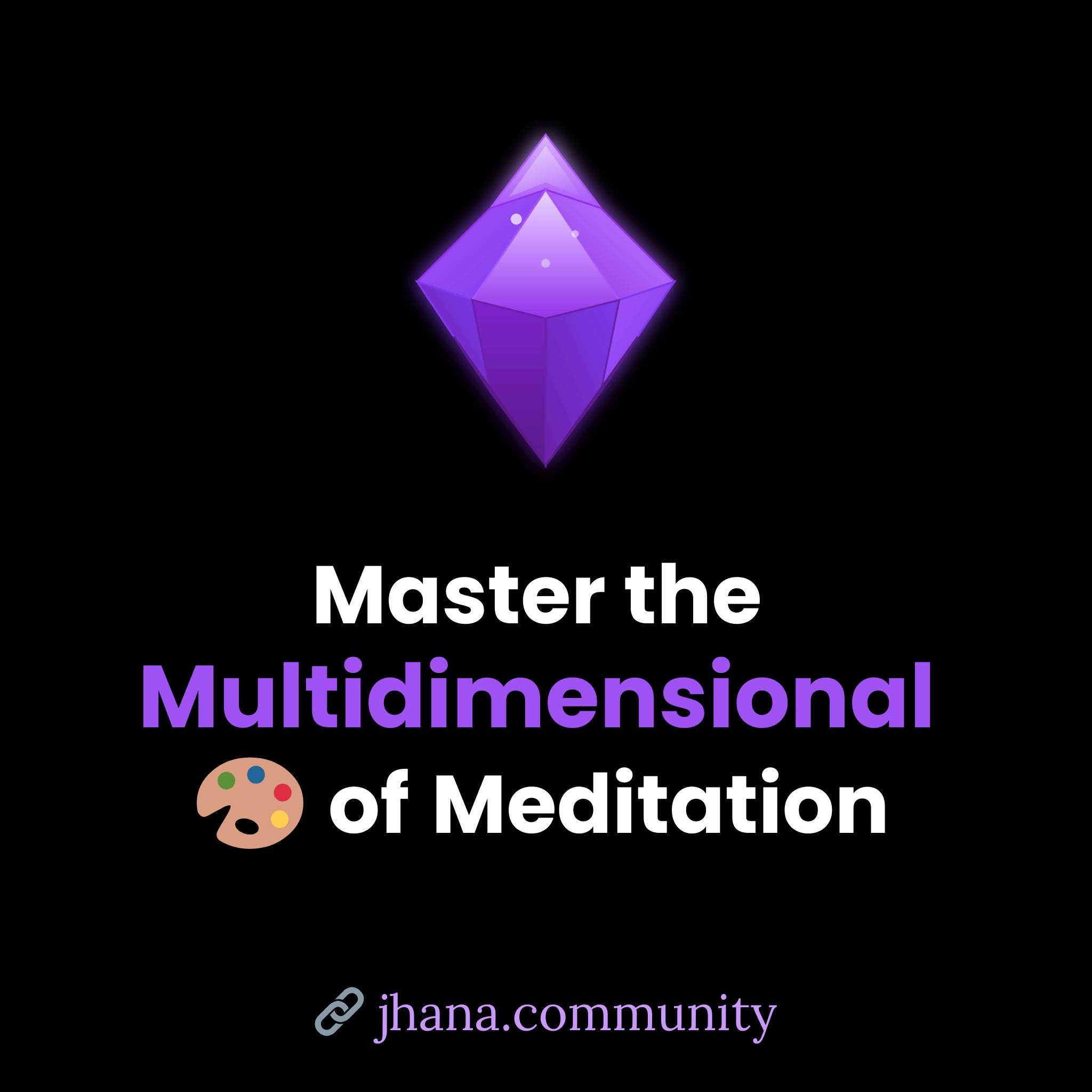
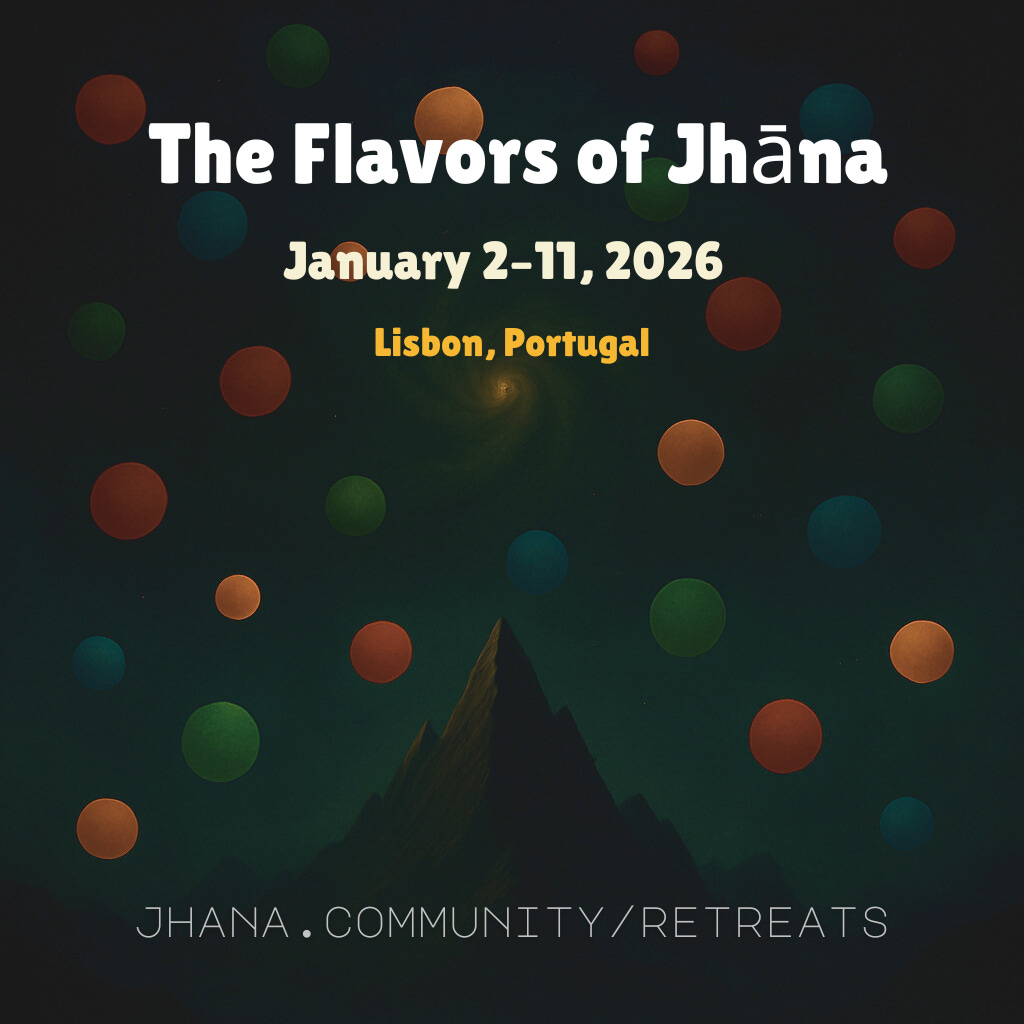


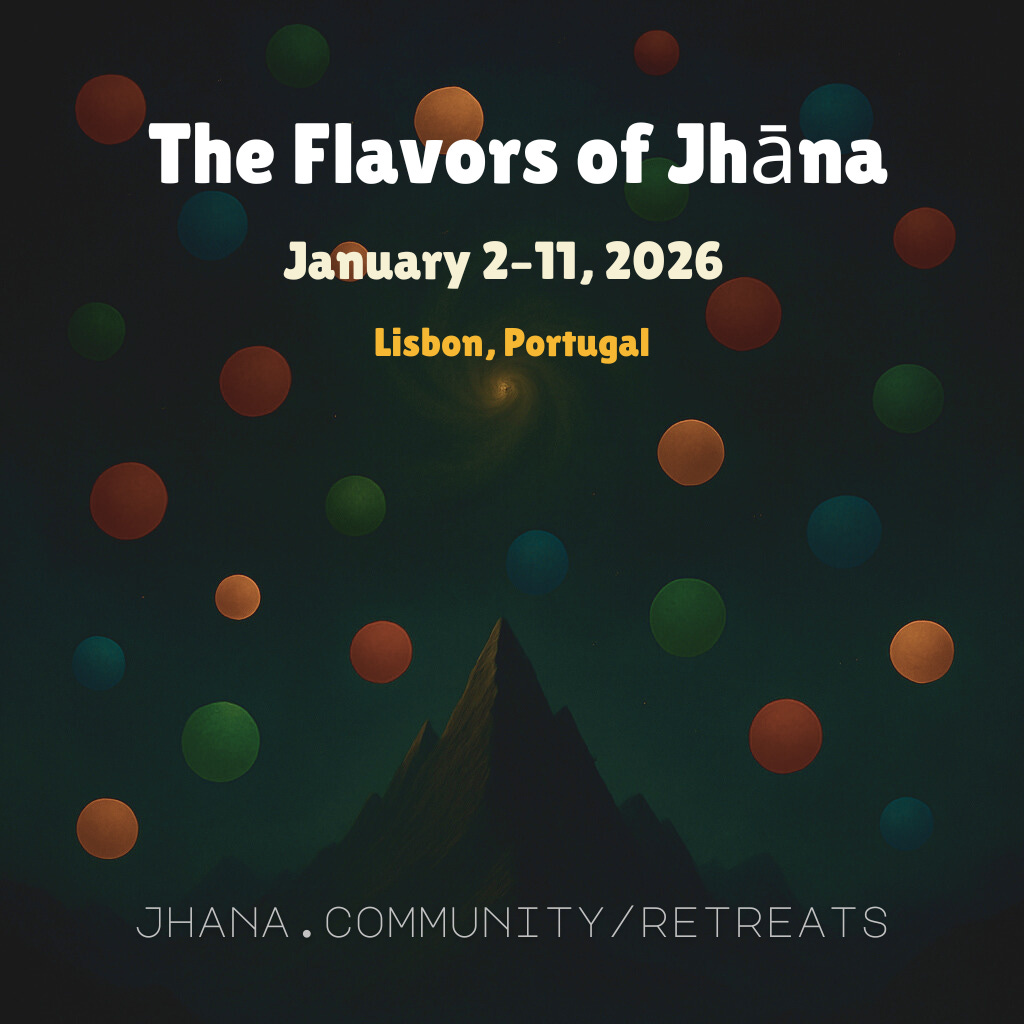
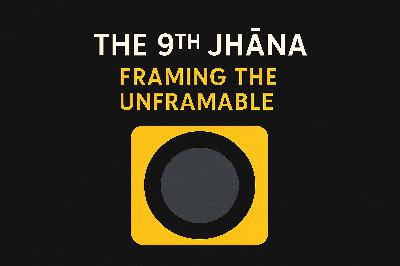
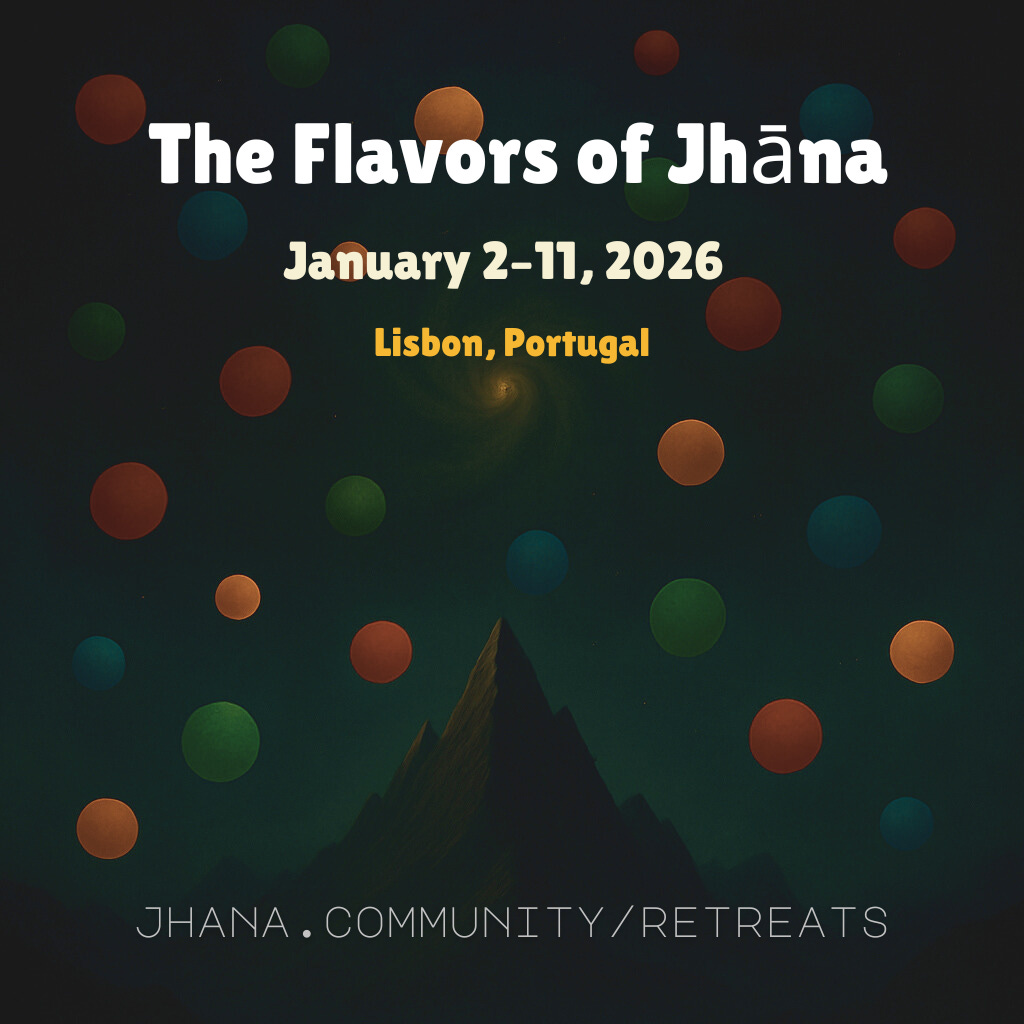

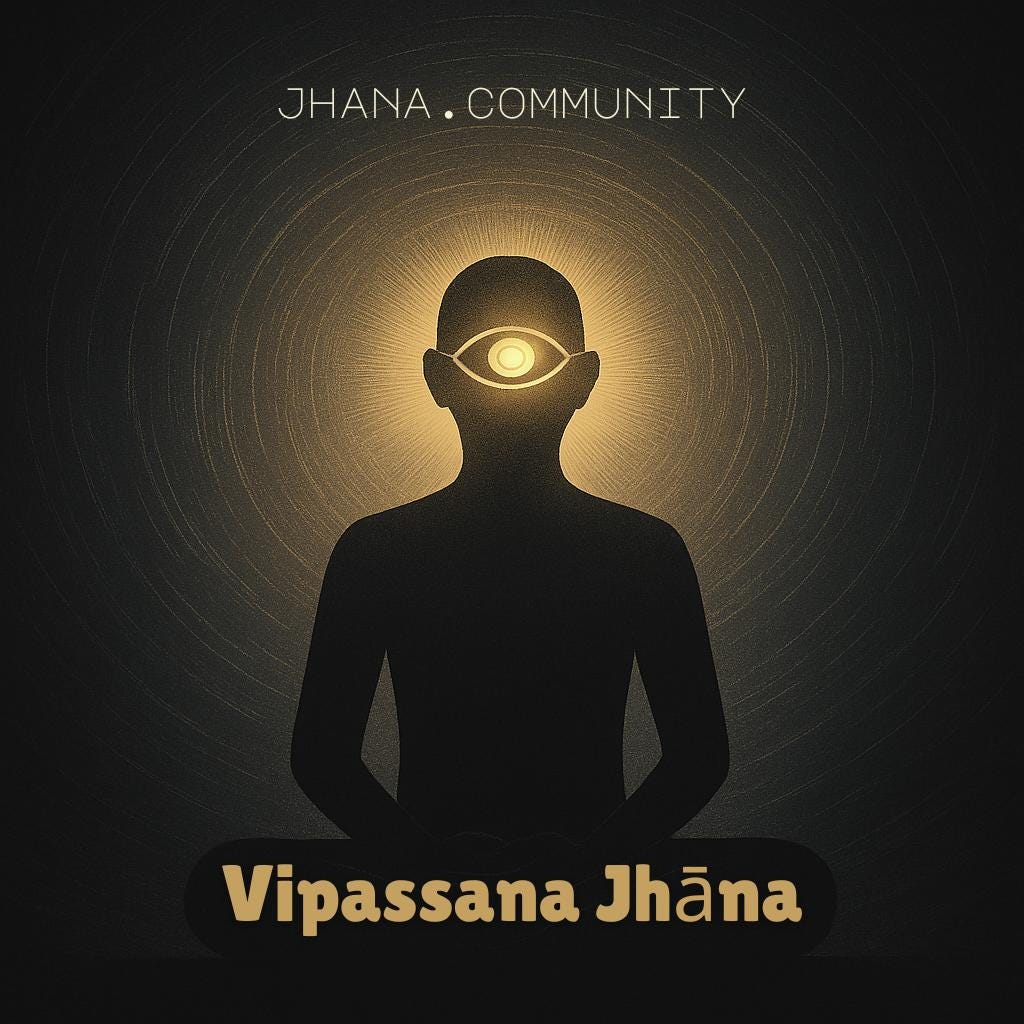






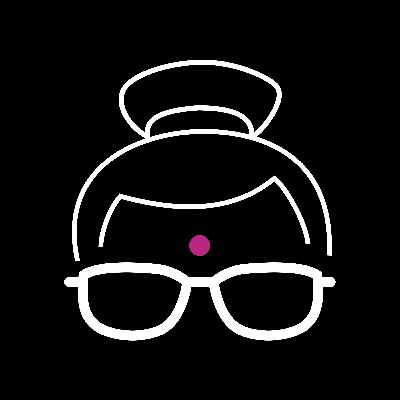






Fantastic episode 🙏✨
the link to part one doesn't work :(
Oh I'd love to listen to your podcast but sadly I can't play them...